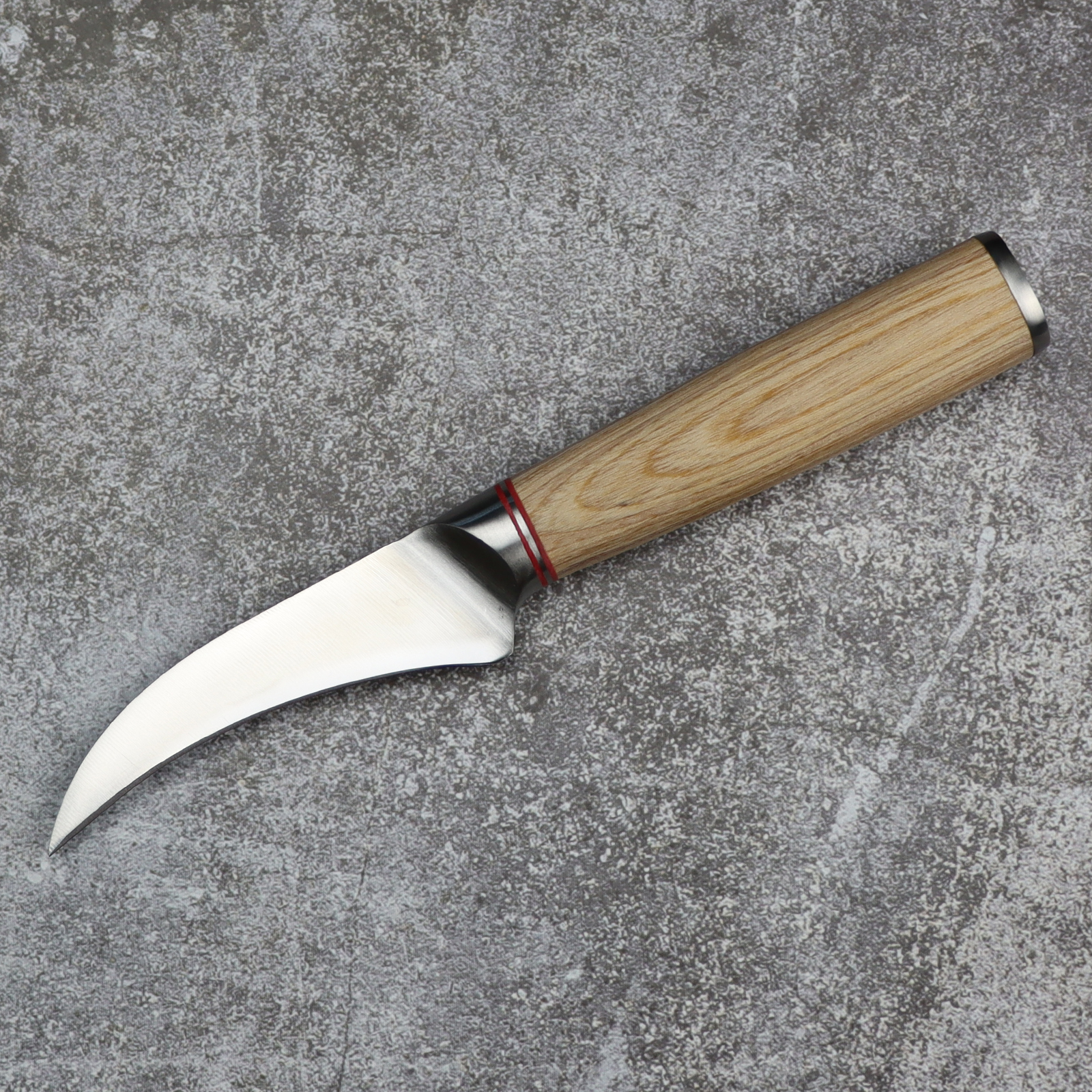How to Use a Chef's Knife
Nov 08,2022 | Fzkaly
The chef's knife is one of the most widely used kitchen knives. There must be a professional chef's knife in every knife set. For cooking, a chef's knife can perfectly solve all cutting tasks.

It's worth noting that Santoku knives can easily be mistaken for chef's knives. Chef's knives are Western-style knives, and Santoku knives are Japanese-style knives. The Santoku knife is created by combining the Western-style chef’s knife culture. Japanese-style knives also have chef's knives, which are called Kiritsuke knives.
Chef's Knife Uses
A chef's knife is a multipurpose knife with a wider and curved blade that can be used for cutting, dicing, slicing, and chopping all kinds of vegetables, fruit, fish, and meat. They are usually 8 to 10 inches long, sturdy and sharp to get the job done perfectly.
6 Simple Ways to Use a Chef's Knife
1. Straight Cutting
Press the ingredients with the left hand, and hold the knife with the right. The blade is vertical to the cutting board and up and down. It can be pushed straight, pulled straight, and sawed straight to cut the ingredients(cut by pushing and pulling back and forth). This cutting method is suitable for brittle foods such as cucumbers, radishes, potatoes, etc.
2. Straight Chop
Straight chop is similar to straight cutting. The ingredients are placed horizontally on the cutting board, the left hand holds the knife end, and the right-hand holds the knife. The knife is raised high and chopped straight down. The drop point is chopped from the front end to the left hand and cut ingredients into appropriate sizes. This cutting method is suitable for ribs, trotters, chicken, etc.
3. Broach Cut
The broach cut is when the blade is pulled from front to back to cut the food. Press the ingredients with your left hand, the blade is perpendicular to the cutting board, pull down from top to bottom, and focus on the front of the knife.
4. Push Cutting
Push cutting is pushing the knife from the back to the front. Place the knife blade flat on the food, and hold the food in your left hand, the knife and the cutting board at 5 to 10 degrees, parallel push the knife. Push cuts are suitable for fragile and thin foods.
5. Saw Cutting
The left-hand presses the ingredients, and the right-hand holds the knife on the ingredients, perpendicular to the cutting board, and pushes and pulls down to cut, cutting the food like a saw. This cut method is suitable for cutting large pieces of loose and brittle ingredients such as ham, sausage, cooked meat, bread, etc.
6. Bevel Cutting
The bevel-cutting method is divided into two types: forward bevel cutting and reverse bevel cutting. During the cutting process, the chef's knife needs to be inclined at a certain angle. When holding the knife, the middle finger should be against the finger support, the thumb and index finger should hold the sides of the knife left and right, and the other fingers should wrap around the handle. In this way, you can hold the knife safely and ensure a precise feeling during use, and also keep the blade well-balanced. This cut method is suitable for thicker foods.

How to Care for Chef's Knife
1. Keep Dry
The chef's knife must be cleaned and dried after use. The chef's knife should not have moisture so that it is easy to rust or stick to dirt. You can first dry the knife with a clean cloth, put it in the knife sheath, and then put it in the knife holder or block.
2. Never Put the Knife in the Dishwasher
Note that you should never put a chef's knife in the dishwasher. The knife blades will become dull and blunted if washed in the dishwasher.
3. Keep Ventilated
Chef's knives for home use can be placed in a ventilated place, but damp spaces such as the gap between the countertop and the wall are prone to breeding bacteria, so it is not recommended to place chef's knives. Cutting boards also need to be stored in a ventilated place, and the cutting boards for raw and cooked food should be separated.
4. Using Cutting Boards
Be sure to develop a good habit of cutting food on the chopping board. Never put the ingredients on the tabletop of the stainless steel countertop to cut. It is easy to cause the blade surface to bend, and even the chef's knife will break quickly.
A chef's knife is a must-have for every kitchen. Learning how to use a chef's knife will make your cooking more efficient.



